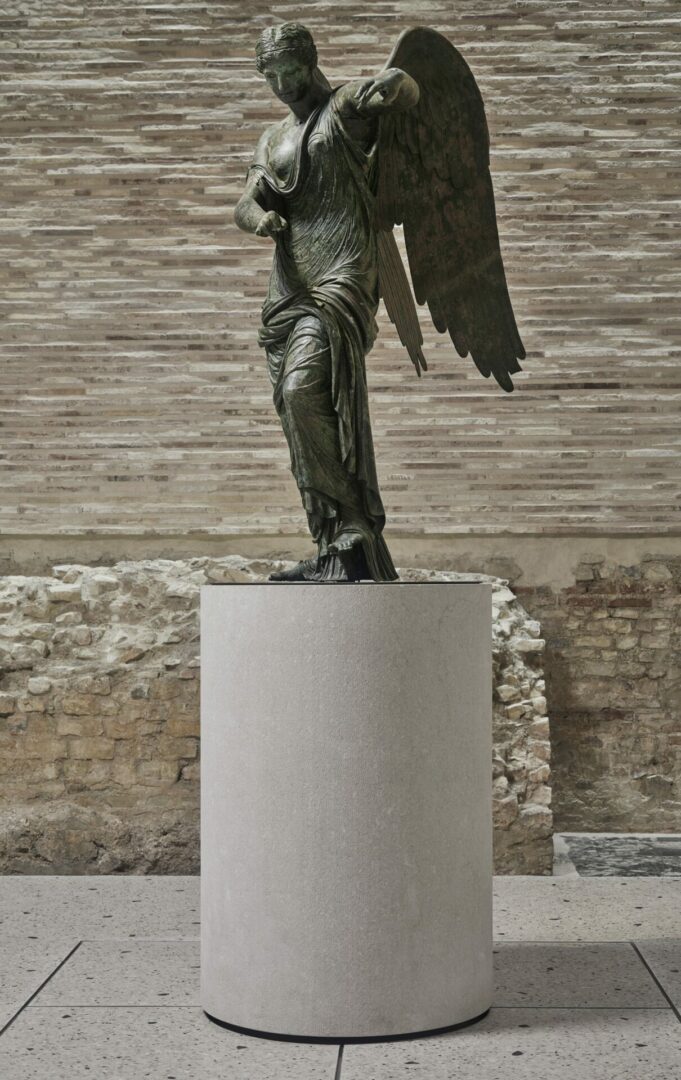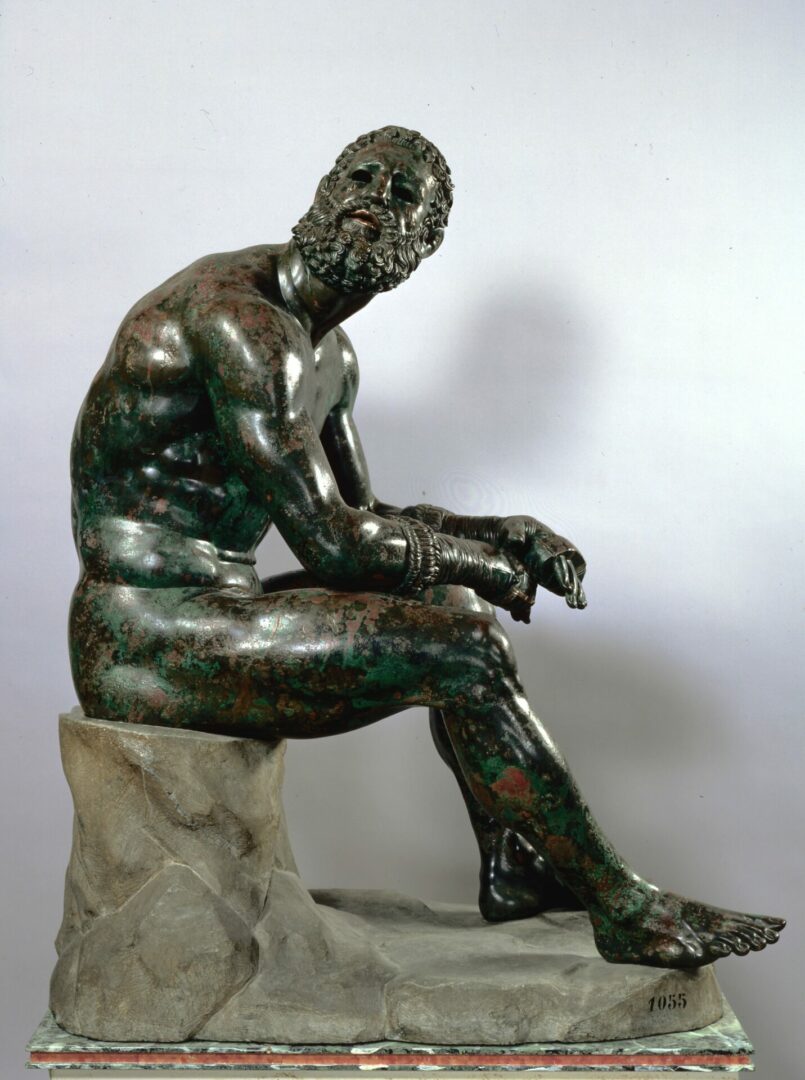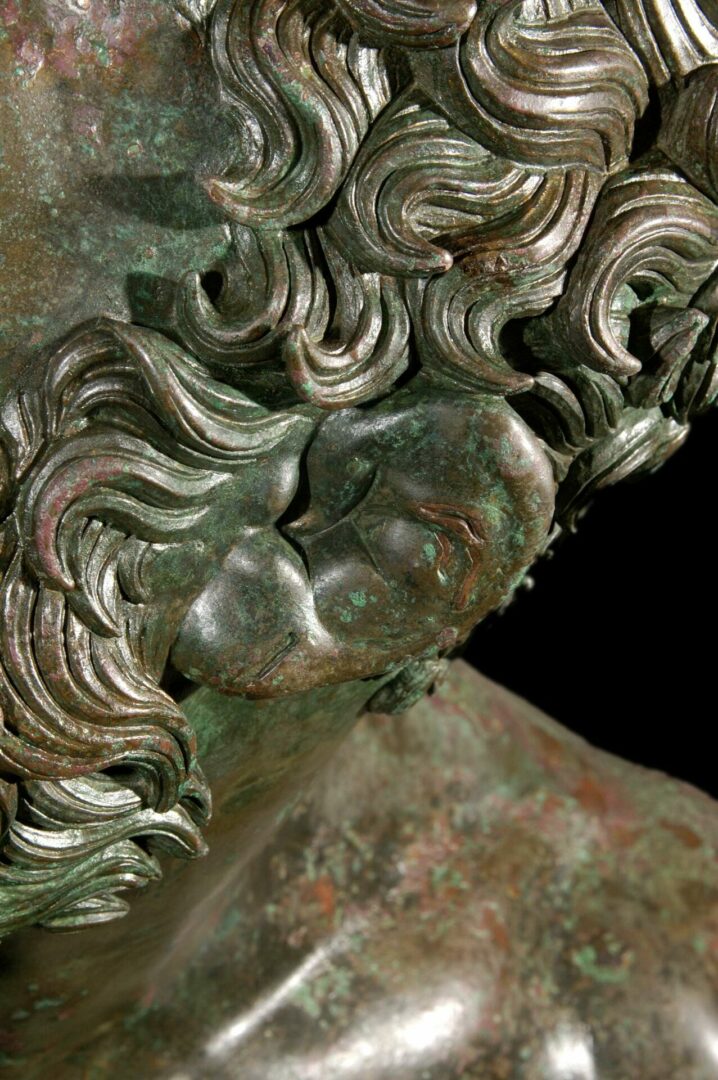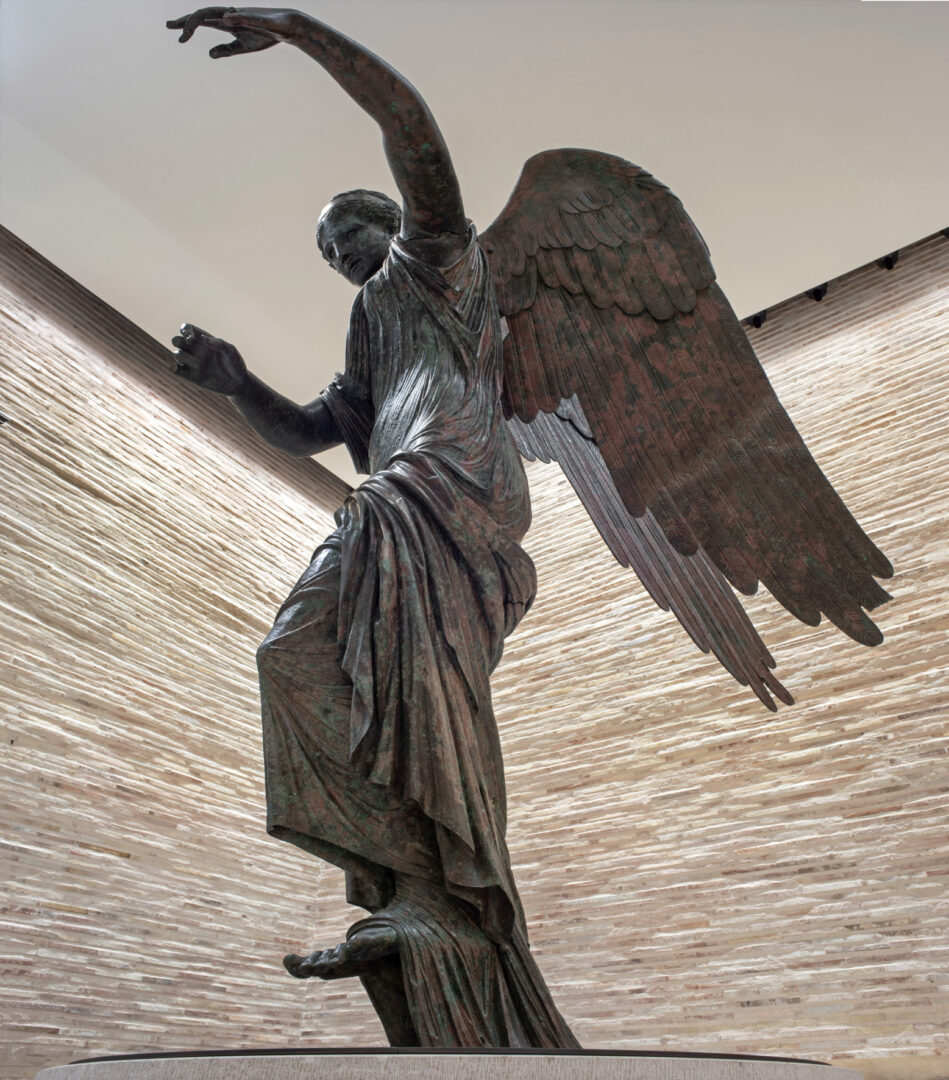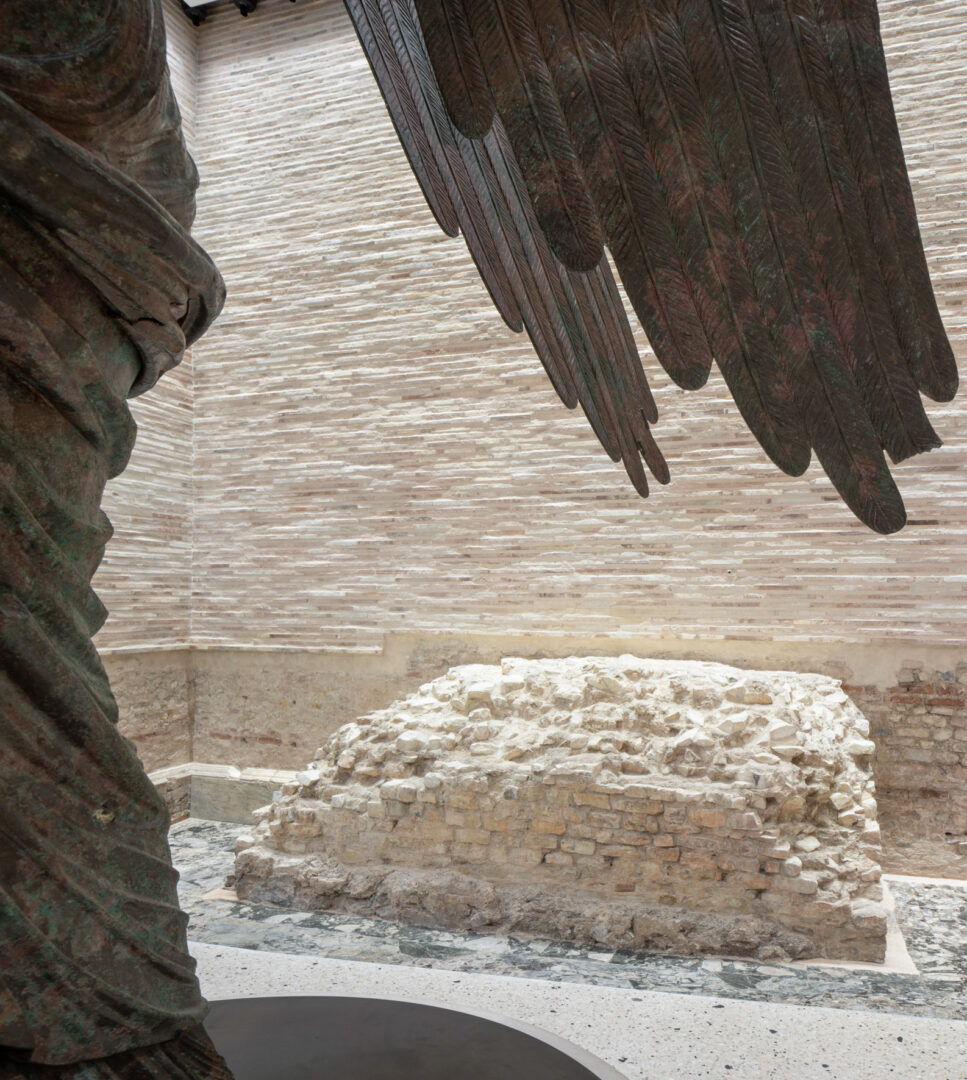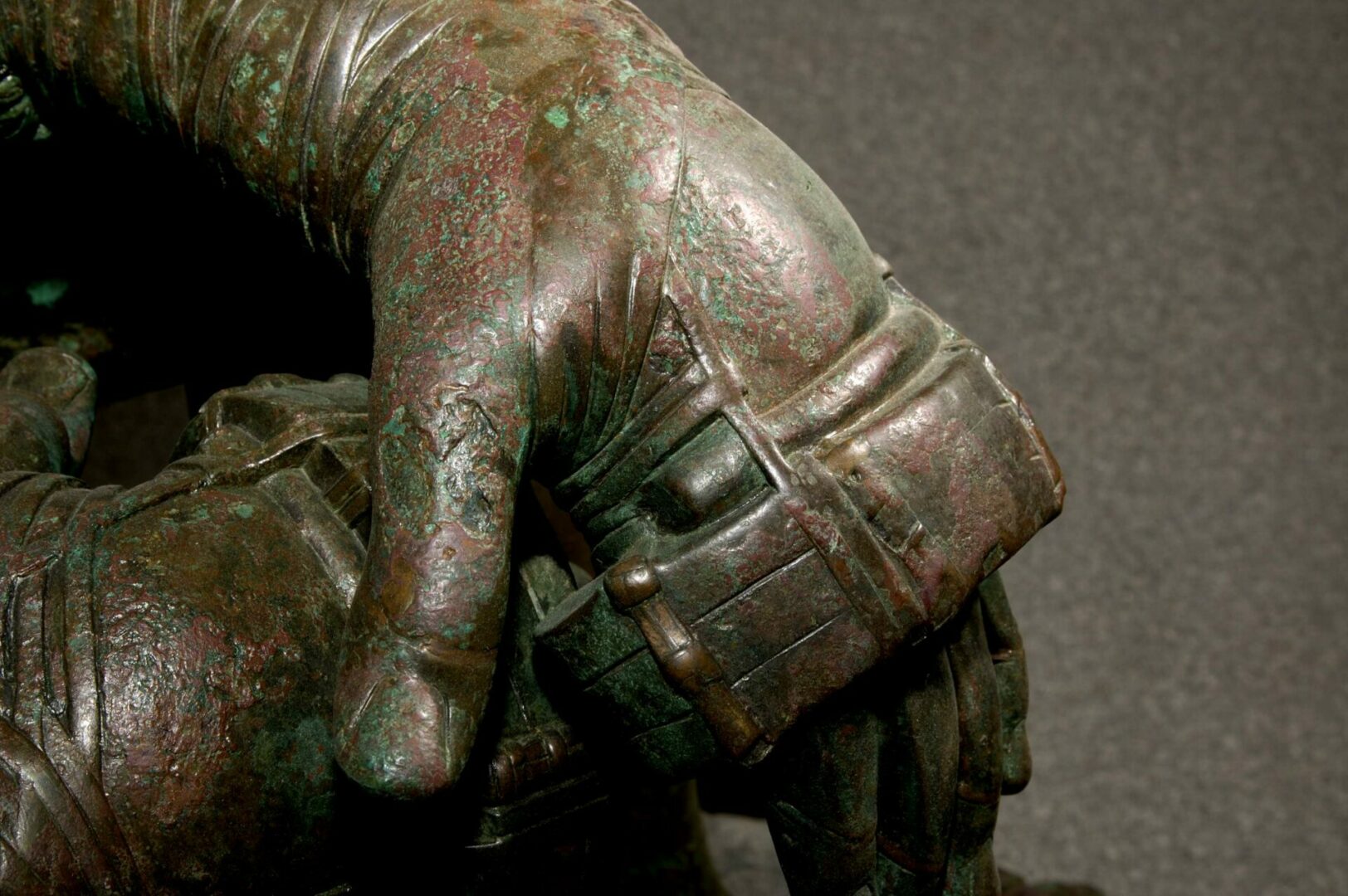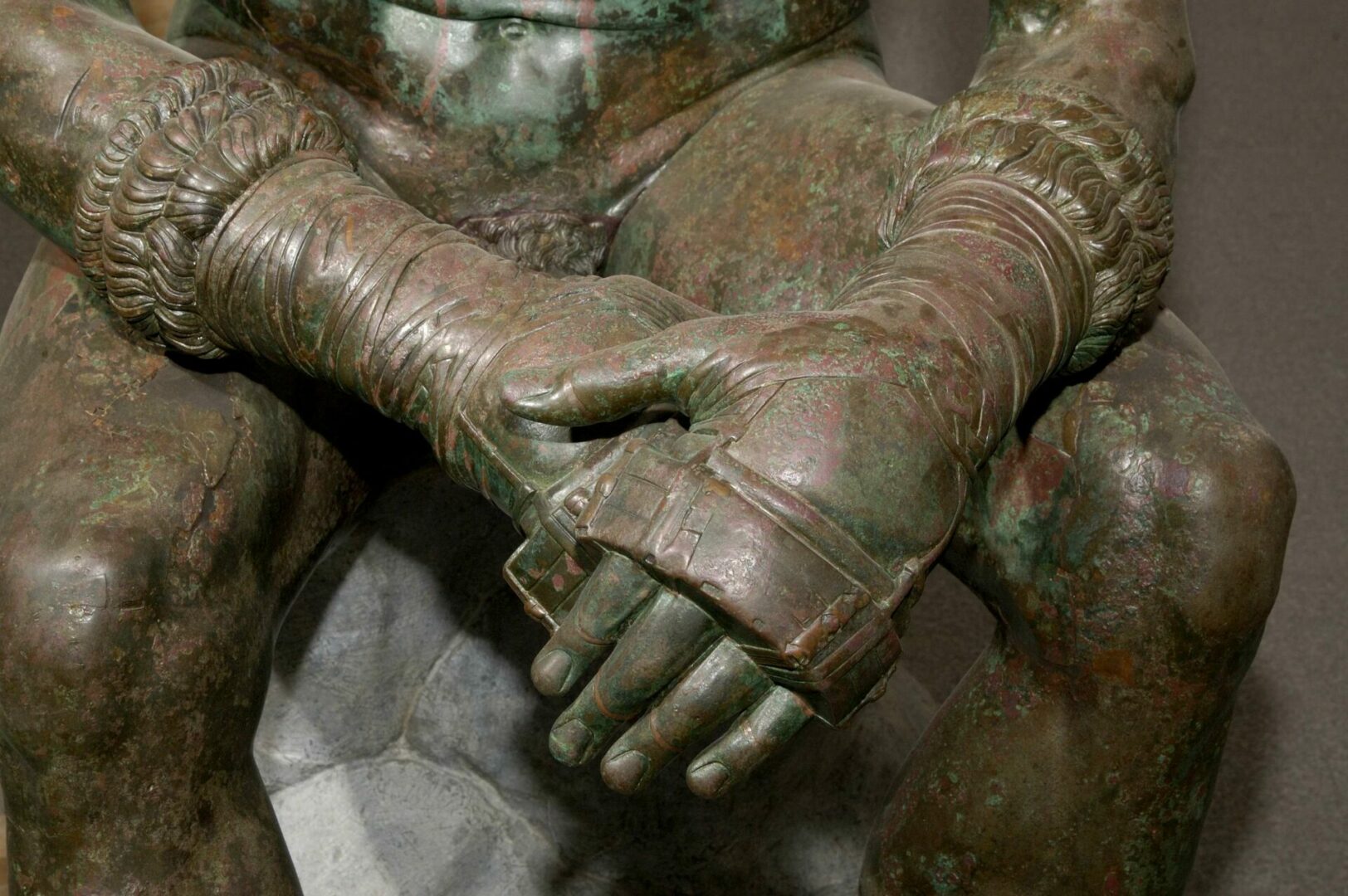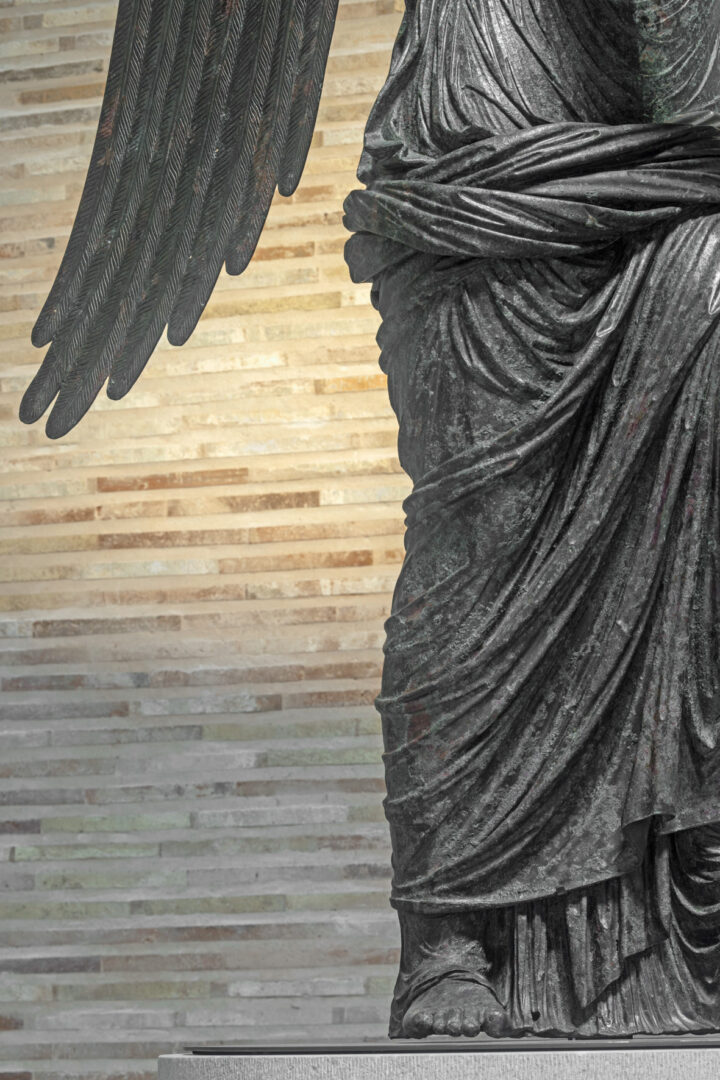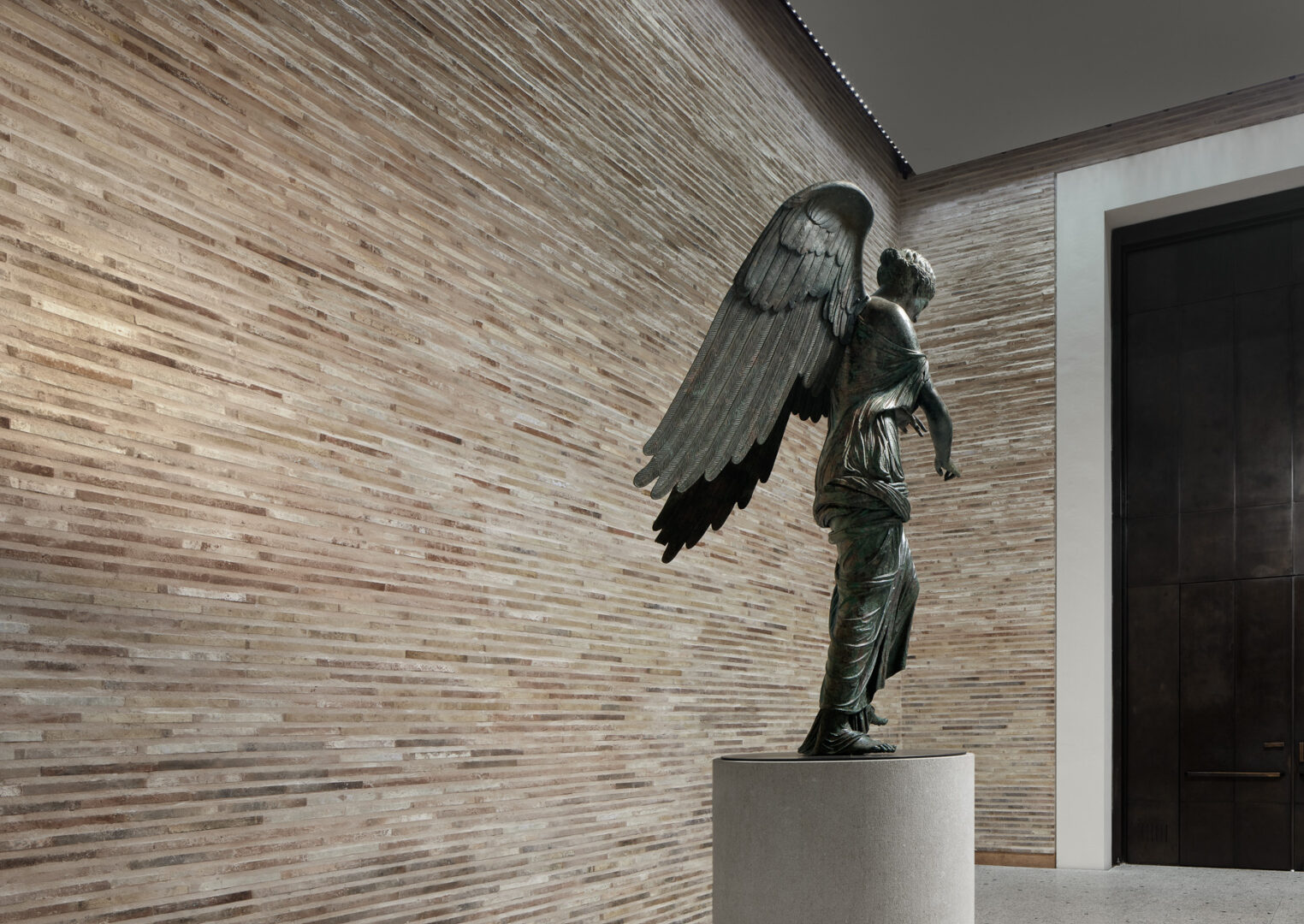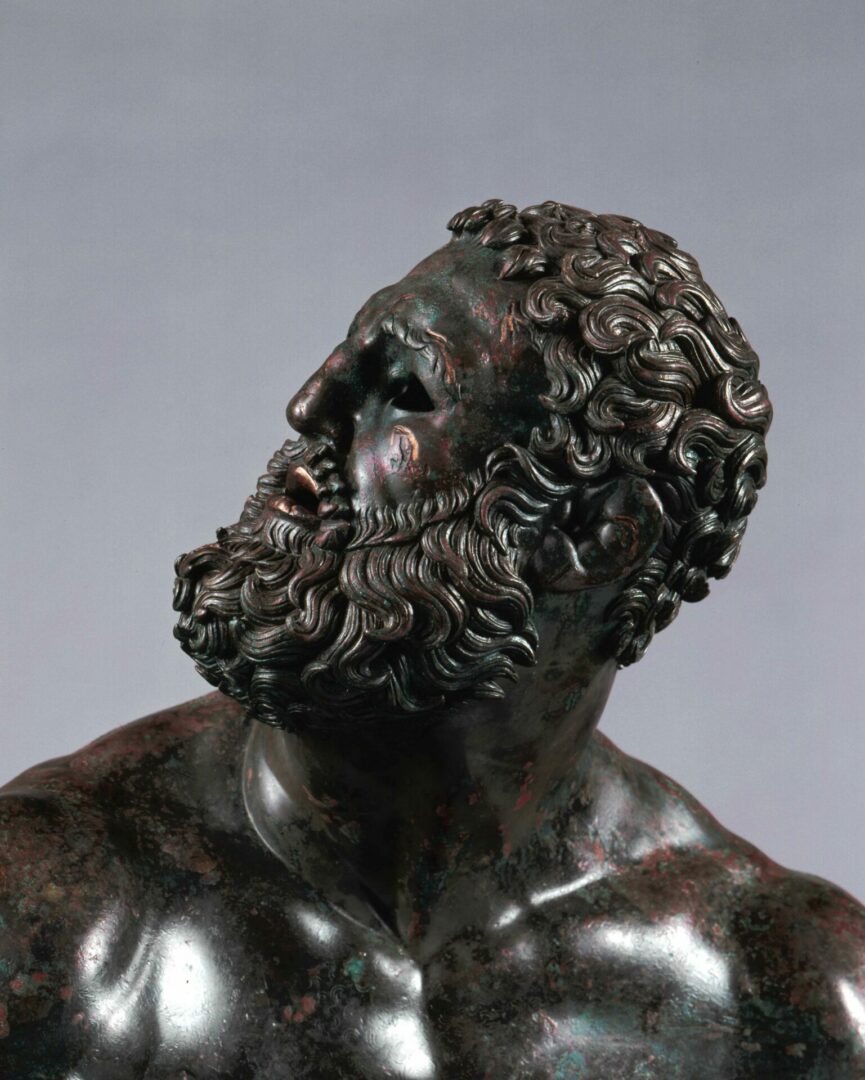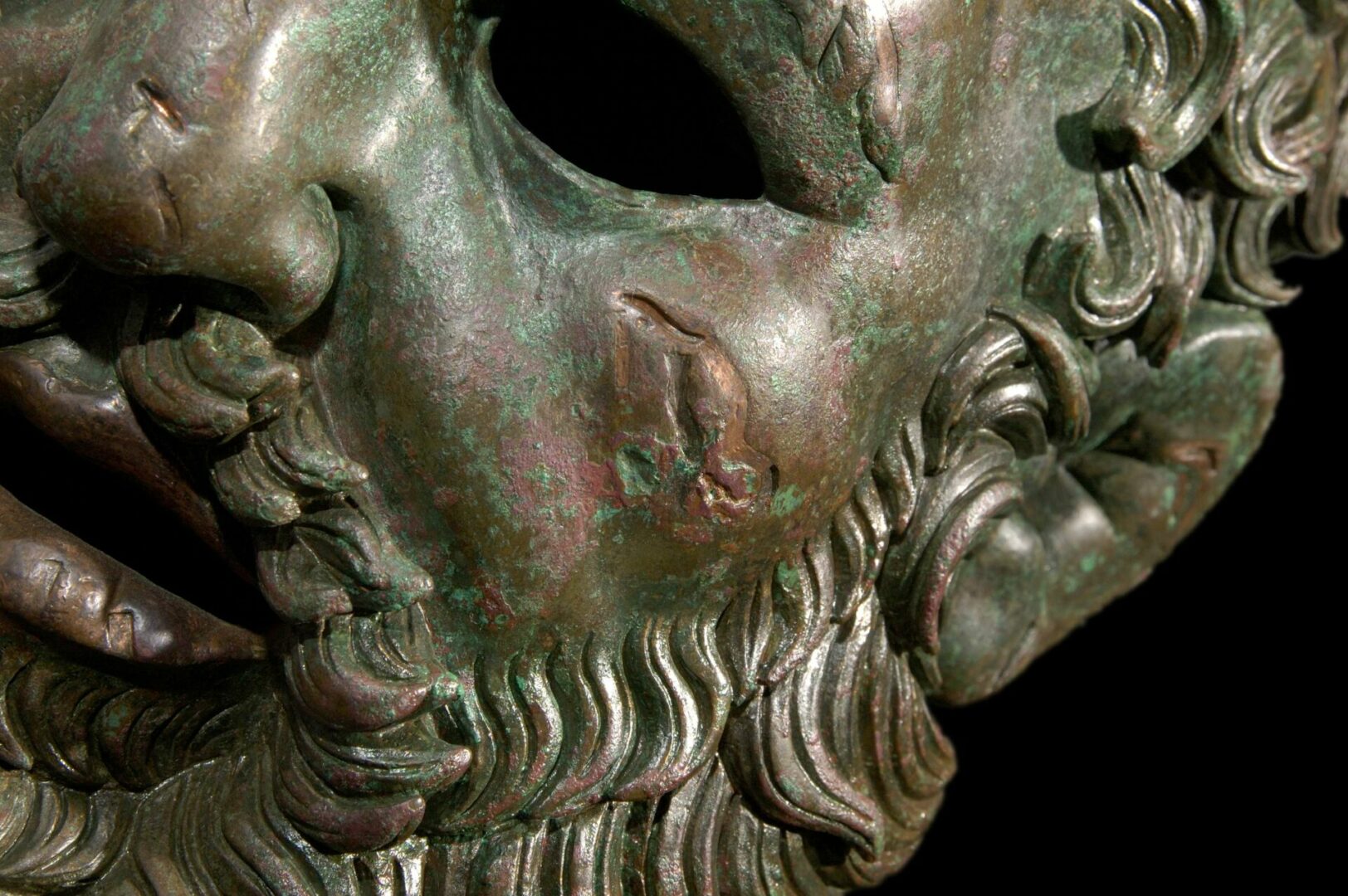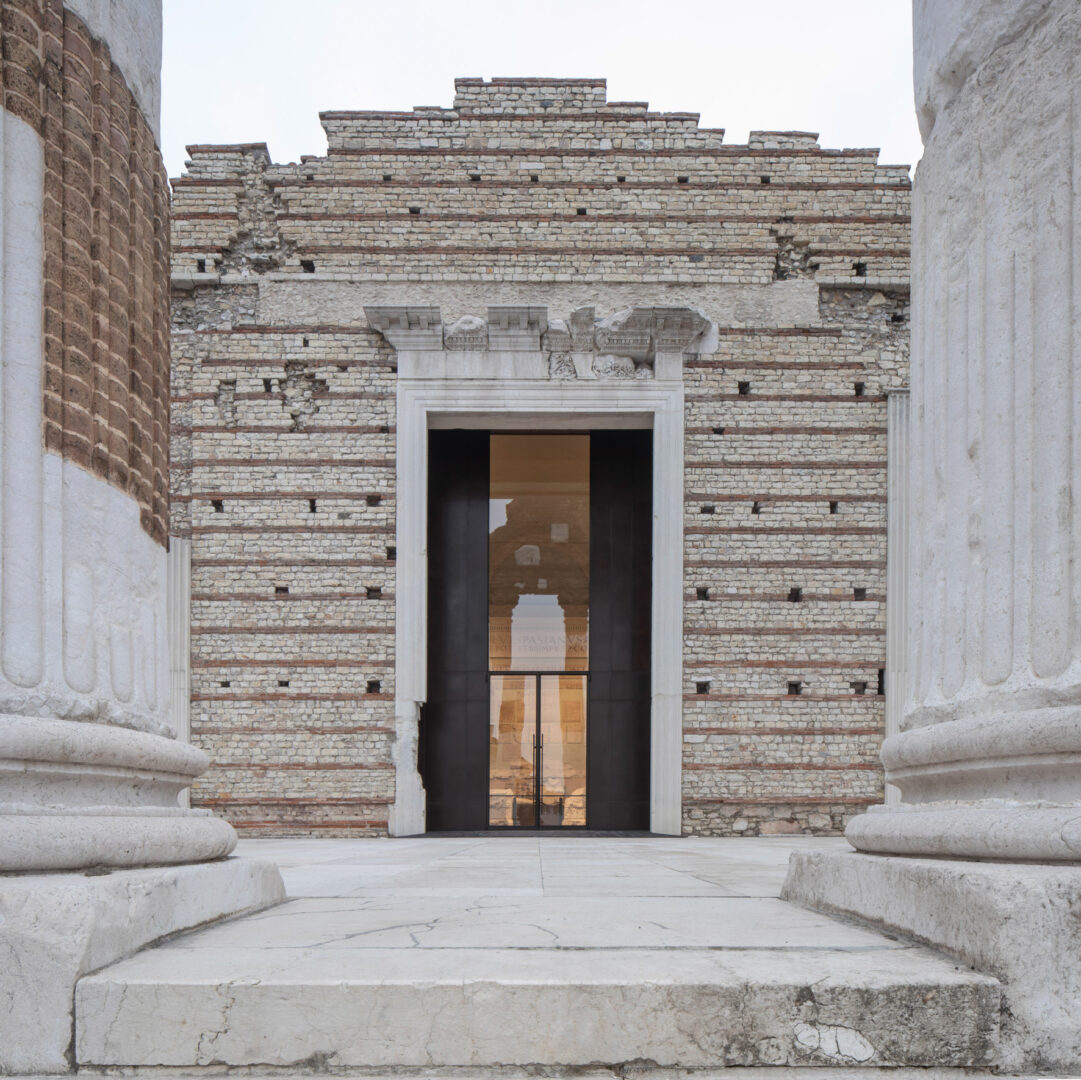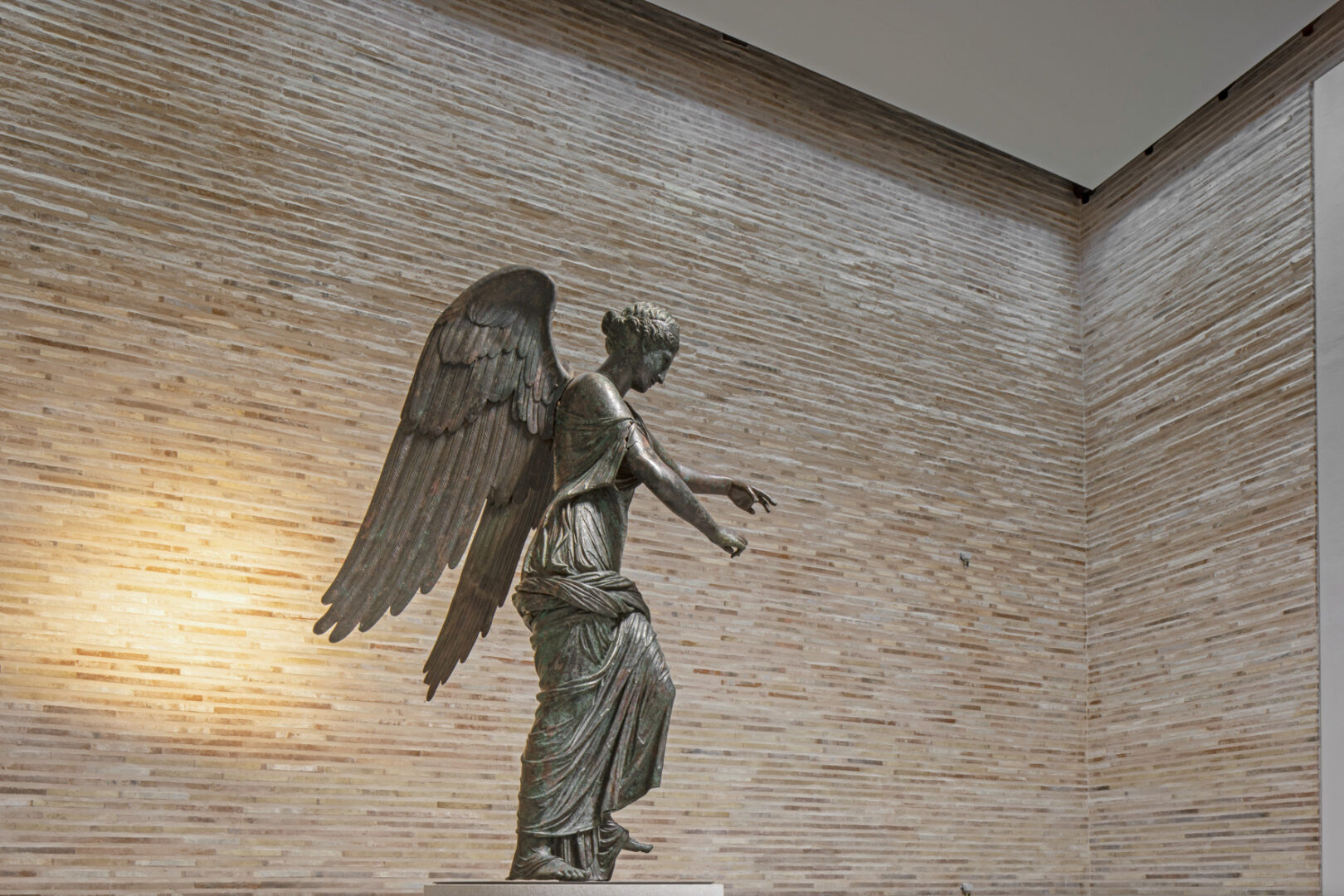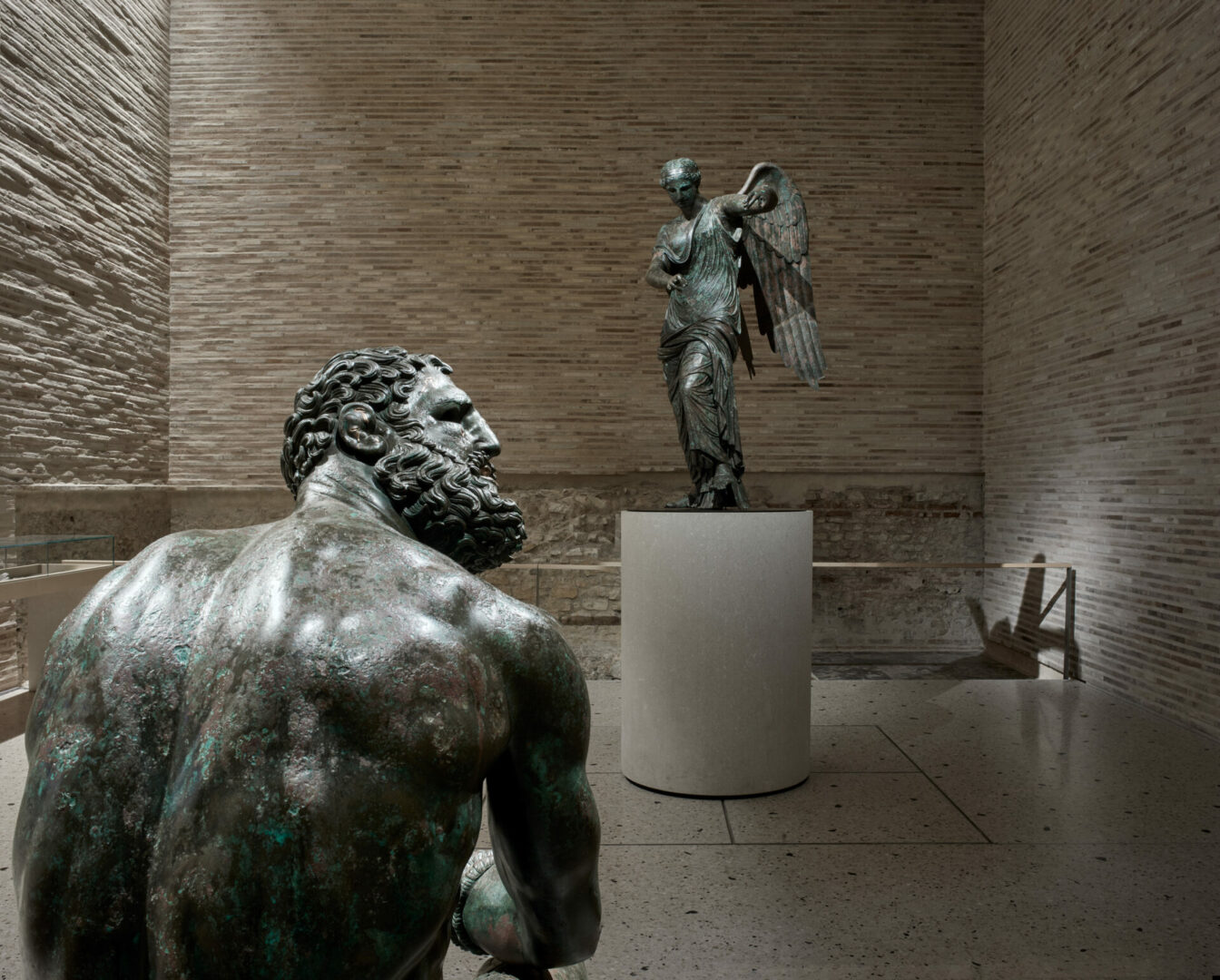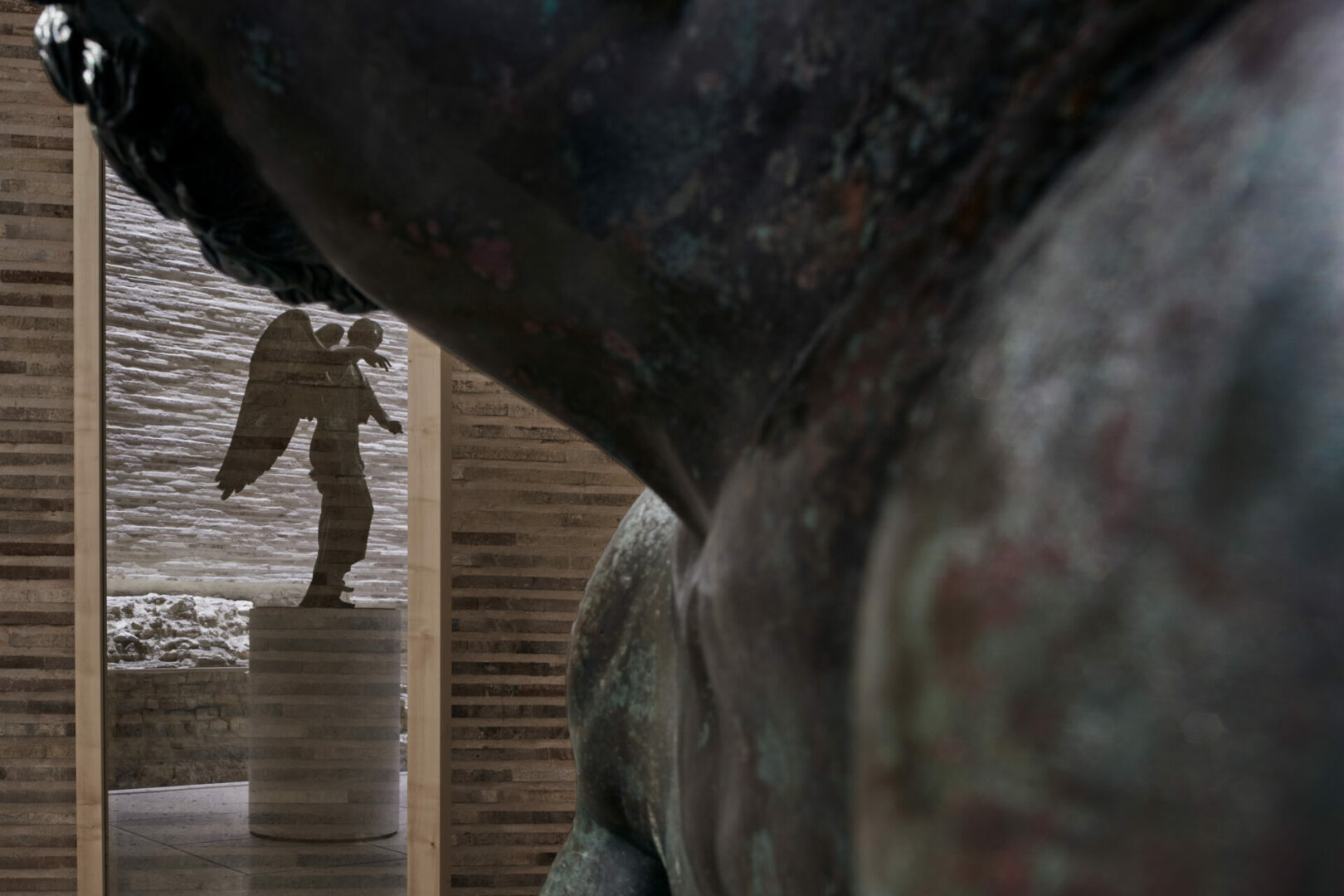The Boxer and the Victory
From 12 July 2023 to 29 October 2023
Two outstanding bronze statues of the Hellenistic period and of the Roman age meet for the first time in Brescia, giving rise to a unique dialogue exploring the meaning of “victory,” from the Nike of athletic victories to the emblem of the pax latina
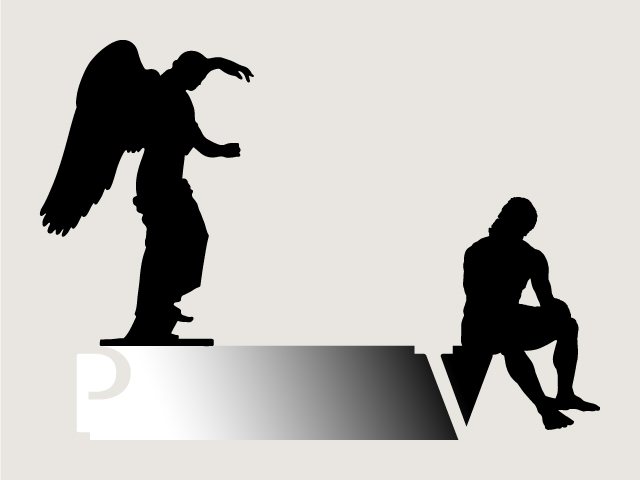
The exhibition
Promoted by: Municipality of Brescia, Fondazione Brescia Musei, Alleanza Cultura, Museo Nazionale Romano
Partner: Intesa Sanpaolo
Technical Sponsor: Capoferri, IGuzzini
This ambitious project marks another valuable milestone in the programme of enhancement and requalification that Fondazione Brescia Musei is developing in the Roman Brixia archaeological area.
Fondazione Brescia Musei with The Boxer and the Victory explores the territory of the foundational art of European culture, celebrating the relation the Brescian Winged Victory enjoys with Hellenistic and Roman culture.
The abstract concept connecting these two extraordinary bronzes, in its absence and personification, is that of success, of a positive outcome, of victory.
The Boxer and the Victory, displayed in the Capitolium in Brescia with a new and spectacular setup curated by the architect Juan Navarro Baldeweg, who is also the author of the captivating showcase of the Winged Victory, provides an occasion to shorten the distance that kept these two artworks apart in antiquity, with a triangulation of elements that will allow us to understand this distance, while also appreciating the many elements connecting these two masterpieces. The limited space of the display is to contain a conceptual narrative with a harmonic counterpoint illustrating the absolute values these pieces still represent for us today.
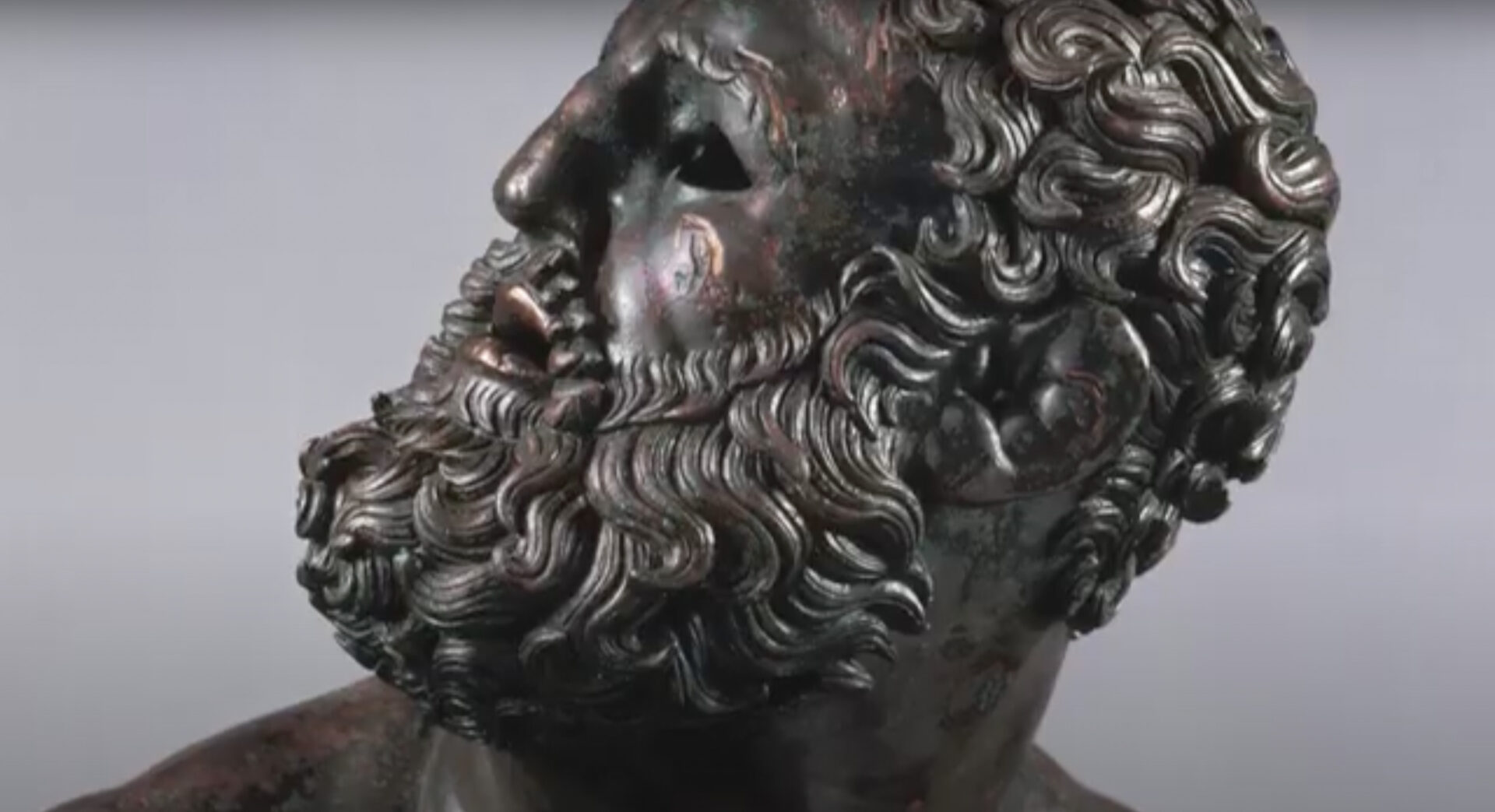
The artworks
The Boxer at rest, one of the highest quality bronzes to have come down to us from the ancient world, was found in 1885 on the slopes of the Quirinal Hill, hidden between the foundation walls of a temple. It depicts a boxer in the moment of rest after a competition, seated with his legs apart and his forearms resting on his thighs. Critics are not unanimous in dating this masterpiece between the 4th and 1st century BC.
The statue was made in bronze using the indirect lost-wax casting technique; cast in several parts, the head, arms and left leg are welded to the torso, while the right leg is cast with the torso. Every detail is rendered with solutions of the highest aesthetic quality and technical sophistication, with extensive use also of contrasting coloured metals to give polychromy and icasticity to the whole. Porosity and surface defects after casting have been carefully repaired by inserting small square dowels. The eyes are not preserved, but must have been made of a different material such as glass paste, semi-precious stones or ivory.
The statue of Winged Victory was brought to light on the evening of 20 July 1826, during the excavation campaign initiated in 1823 by the Ateneo di Scienze Lettere e Arti diBrescia, by delegation of the municipality and thanks to a public fund-raising campaign, in the Capitolium area. The creation of the Winged Victory – as we know today – can be traced back to shortly after the middle of the 1st century A.D. and is to be attributed to a high-level atelier – to be located in the Brescia area – that was able to create a new and original statuary model; the technique used is that of indirect lost-wax casting, which requires great skill and technological ability. Some parts of the statue show traces of gilding, suggesting that its appearance in ancient times must have been different from how we perceive it today. The presence of this statue, with a significance so closely linked to a military battle, suggests that it may have been a gift from the imperial house to Brixia for support given in a military event, perhaps the clashes in 69 AD between Brixia and Cremona between the armies of Vespasian, Otto and Vitellius. Brescia supported the former, who was victorious; Vespasian‘s name is also mentioned in the pediment of the Capitolium where it is not excluded that the statue was displayed.
Setting up
A spectacular new installation curated by architect, sculptor and painter Juan Navarro Baldeweg, the creator of the new Capitolium, recognised as a UNESCO World Heritage Site, which from 2020 will house the Winged Victory of Brescia after its epochal restoration by the Opificio delle Pietre Dure in Florence.
Tickets
Access to the exhibition The Boxer and Victory requires the purchase of a UNESCO ticket, which also allows access to Brixia Roman archaeological area and the Museum of Santa Giulia.
Until January 7, 2024, the ticket will also allow you to visit the exhibition Plessi sposa Brixia set up in the first hall of the Capitolium and at the Museum of Santa Giulia.
The UNESCO ticket is valid for 3 days (until midnight on the third day) from the date of issue, during which time n.1 entrance will be allowed for each of the two museum venues.
Entrance tickets
Opening times
Summer timetable (1 June – 30 September):
- Mondays (non-holidays): Closed
- Tuesday, Wednesday, Thursday, Friday, Saturday, Sunday: 10.00 a.m. – 7.00 p.m.
- Last admission: 6.15 p.m.
Winter hours (1 October – 31 May):
- Mondays (non-holidays): Closed
- Tuesday, Wednesday, Thursday, Friday, Saturday, Sunday: 10.00 a.m. – 6.00 p.m.
- Last admission: 5.15 p.m.
Overtime hours
- Sunday 1 October: 10.00 a.m. – 8.00 p.m.
- Last admission: 7.15 p.m.

